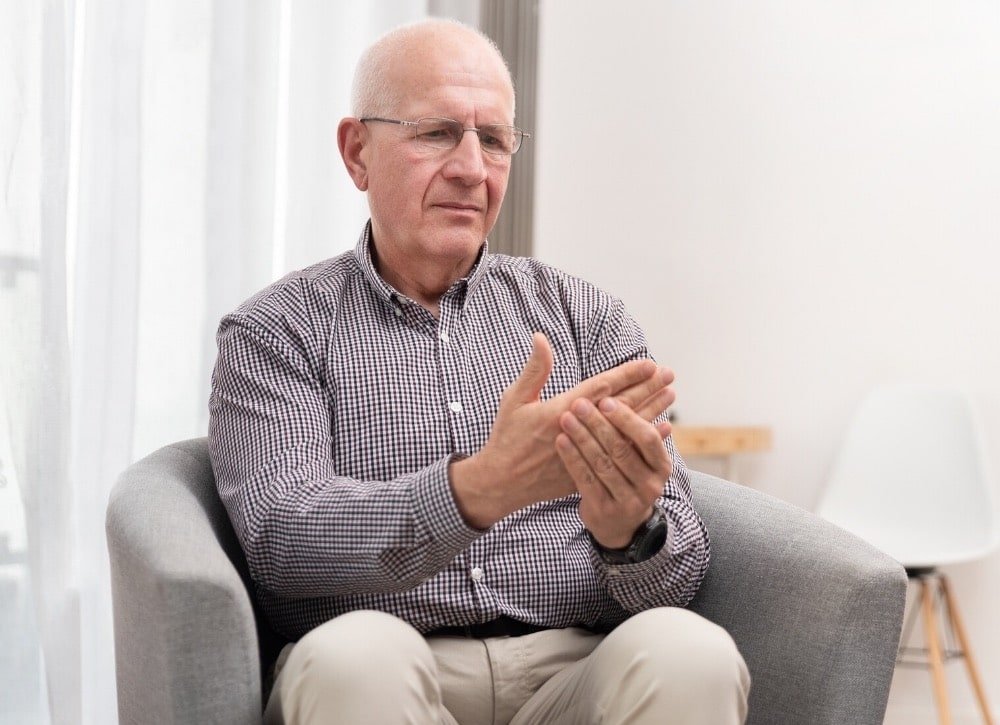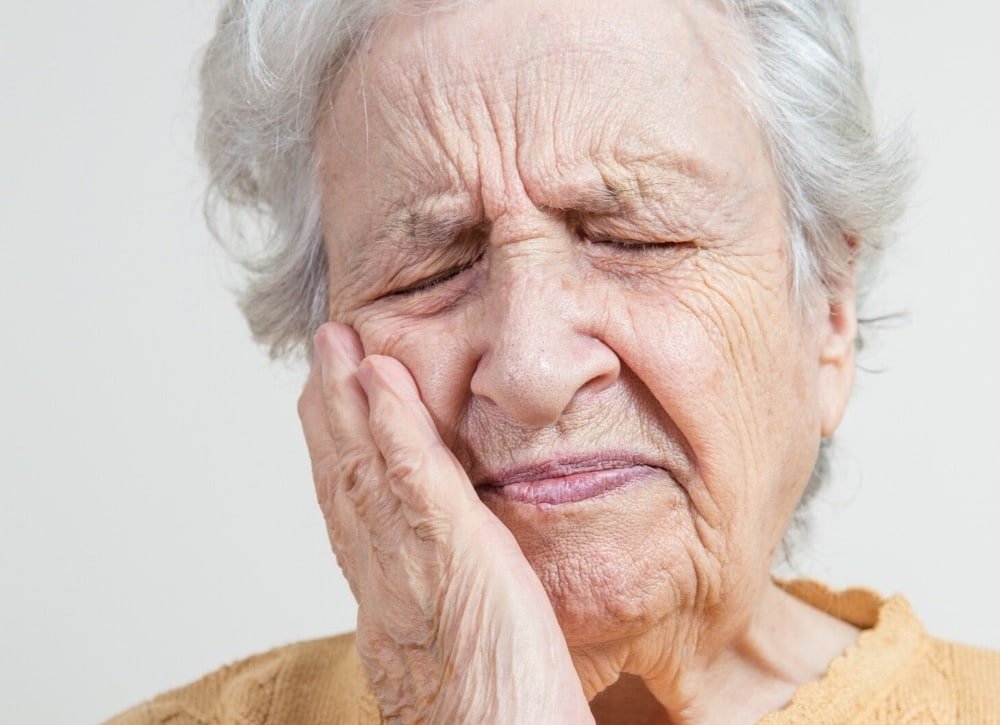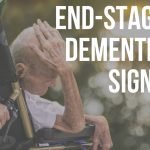There are very many questions people have about dementia one of the most popular ones revolves around dementia and pain.
Some people wonder whether it’s true that persons with the illness experience pain or they just fake it.
Honestly, persons with dementia will feel pain and it is usually challenging to assess.
Let’s look at some of the areas that both persons with dementia and carers should be knowledgeable about when it comes to pain and dementia.
Contents
Causes of Pain in People with Dementia

When it comes to the topic of dementia and pain, several causes may make a person with dementia feel pain.
Note that potential pain causes for individuals with dementia are the same for everyone else.
Dementia on its own does not generally cause physical pain as this typically comes from other conditions.
One of them is the fact that persons with dementia are at higher risk of injuring themselves or falling.
Other factors that can make the suffering person feel pain include:
Sitting or lying on the same spot for hours without moving.
This increases the risk of joint stiffness, muscle contraction, constipation, or pressure sores which can cause discomfort and severe pain.
Also, there are other conditions as well:
- Arthritis
- Headaches or migraines
- Dental issues
- Back problems
- Foot problems
- Infections
- Osteoarthritis
- Diabetes
- Skin tears
- Leg ulcer dressings
Detecting Pain in Persons with Dementia

As dementia progresses, it can affect a person’s language skills to the extent that they are not able to express when they are in pain.
Some affected persons may not even remember how they hurt themselves or the source of their pain which adds to the challenges of trying to communicate about their pain.
Caregivers should, therefore, know how to detect when a person is suffering from dementia and pain so that it can be treated as soon as possible.
Because persons with dementia will experience pain differently, at times it may be possible to ask directly whether a person is in pain.
This is where you shoot direct questions like “does it hurt”, “are you in pain? “ “Is it sore?” and they will give you an answer.
However, when a person is not able to communicate how they are feeling, perhaps because they have advanced dementia, their behaviors might give you a clue when they are experiencing pain.
Some of the behaviors include social withdrawal or becoming increasingly agitated. Other non-verbal cues that a person may use to communicate that they are in pain or distress include:
Facial Expressions
Some signs on a person’s face that may be an indication they are in pain include clenching teeth, distorted expressions, wrinkled forehead, rapid blinking, tightened or closed eyes, grimacing, frightened or sad face.
Changes in Day-to-Day Activities
You may observe that a person no longer wants to eat, does not rest, has sudden changes to their sleep patterns, and change their normal routine.
This may tell you that a person may be suffering from a combination of dementia and pain.
Body Movements
Some changes in body movement might also be a way of communicating that an individual is in pain.
This is where a person might start fidgeting, pacing, guarding a certain part of the body, rigid, have a tense body posture, or experience restricted movement as well as mobility or gait changes.
Changes in Emotions or Thinking

When a person with dementia is crying, highly irritable, confused, become combative, aggressive, resists care, or have decreased social interactions, it may mean that they are feeling pain.
Physical Changes
At times, a person with increased sweating, blood pressure, and heart rate may be experiencing pain.
The same person might also be reluctant to move or experience slow movement or a limited range of motion.
Vocalizations
Although a person may not clearly say they are in pain, there are some verbalizations they can use to express how they are feeling.
This can include being verbally abusive, cursing, asking for assistance, grunting, calling out, chanting, noisy breathing, groaning, moaning, or sighing.
Tips for Avoiding Common Causes of Pain for Persons with Dementia

Because pain is easier to prevent than relieve, there are some tips that you can work with to help avoid some common pain causes like:
- Ensuring clothes fit right
- Checking to see if dentures fit well as well as practicing good oral and dental hygiene
- Making certain that the ill person has appropriate and comfortable footwear
- Regularly checking assistive devices like eyewear and hearing aids to ensure that they are properly working and fit well
- Encouraging gentle movement of all limbs by stretching and bending frequently
- Visiting the doctor if there is a slight change in behavior so that whatever is disturbing a person may be caught early
Managing Pain for Individuals with Dementia

When you suspect that a person is going through dementia and pain, it is advisable to seek medical attention.
Doctors have special tools that they can use to detect pain in seniors who have dementia.
The health care workers are also in the best position to prescribe appropriate pain medication depending on the cause of pain.
Some of the drugs that doctors may prescribe include opioids, non-steroidal anti-inflammatory drugs, aspirin, laxatives, and analgesics.
There are also non-drug therapies that can help with dementia and pain.
Depending on doctor’s instructions they can be implemented alone or in combination with pain alleviating drugs.
Examples of therapies that can help include:
- Relaxation
- Massage
- Gentle stretches and exercises
- Application of cold or hot packs
- Acupuncture
- Physiotherapy
- Distraction techniques
- Pet, music, or aromatherapy
If a person needs to be on long-term pain management, you can always consult different professionals like tissue viability nurses, a general practitioner, physiotherapist, or a pain specialist team in your locality to get expert advice on effective pain management strategies.
Consequences of Not Treating Pain for Persons with Dementia

When a person develops dementia and pain, some consequences that may arise when the pain goes undetected and untreated.
The most obvious is that the affected person will end up suffering unnecessarily.
The individuals may also receive inappropriate treatment in a bid to curb some of the behavioral changes they may adapt. For instance, a person may be put on antidepressants when chronic pain results in depression.
A person going through persistent pain may also experience decreased mobility which may affect the quality of life in the long-run.
Experts also agree that pain can affect thinking and other functions of the brain which can lead to worsening of dementia symptoms.
This is why it is crucial to recognize and treat any form of pain that a person with dementia may have before it results in poor medical outcomes and other proud negative implications in their lives.







